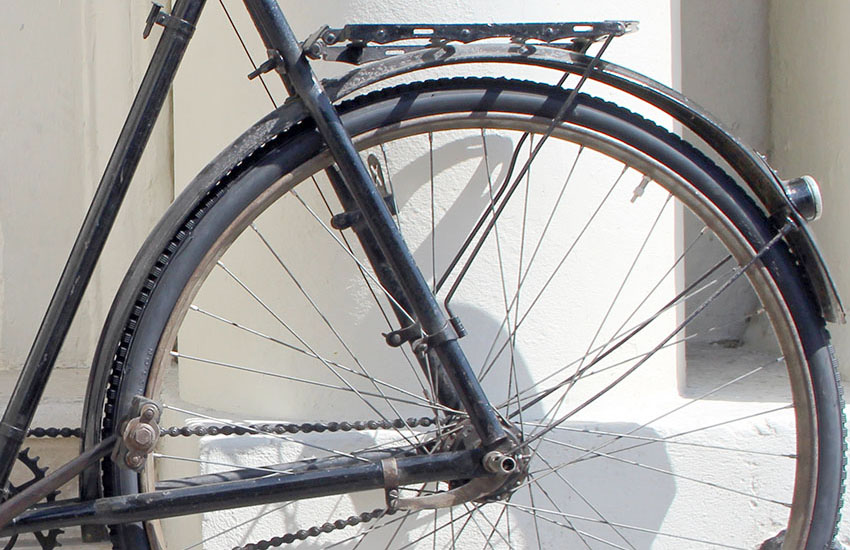

There are perhaps some few firms in the trade who occupy larger factories than the Centaur Company, and turn out a larger number of machines per annum, but there is not one which has done more towards the development of the modern bicycle, or which has consistently held its place in the very front of the industry.
– R.J. Macready, in The Irish Cyclist magazine
Formerly Thos. Townsend & Sons, the Centaur Bicycle Co, of West Orchard, Coventry, was established in 1876 under the direction of Edmund Mushing and George Gilbert, the latter formerly of the Coventry Machinists Co. Mushing was responsible for marketing and administration (later Managing Director); Gilbert was the design engineer. With many innovative design features, the company was one of the pioneers of the cycle industry and they started developing motorcycles and cars by the turn of the century (although the cars did not go into production).
Below you can see Edward Mushing driving a 1904 prototype Centaur car. His wife is sitting behind, and next to Mr. Mushing is Henry Tricket, the car’s designer. They are passing the Shoulder of Mutton public house, in Grandborough, about 15 miles from Centaur’s Coventry factory.
Edward Mushing died in 1910, and the company was taken over by Humber, who discontinued the Centaur name in 1915, during WW1, though it was brought back after the War for a cheaper range of Humber bicycles.


1910s Centaur ‘Lightweight’ Roadster
Sturmey-Archer Model KC tricoaster brake
24″ Frame
28″ Wheels
Frame No 107305
(Now sold)

The frame number on this Centaur suggests manufacture around the time the company was bought by Humber (in 1910 after the death of Centaur’s boss, Edward Mushing). I assume it was part of the stock of parts that Humber inherited. Humber resumed production of Centaurs in the early 1920s, using the old Centaur frames and parts. This example has the earlier Centaur diamond frame – as well as its early frame number, it has a 24″ frame, whereas 1920s Centaurs were listed in 21″, 23″ or 25″ sizes). The chainwheel is also the earlier design. But is has later gears – The Sturmey-Archer Model KC tricoaster brake was introduced in 1922 – and a normal front fork rather than Centaur’s duplex type. A tricoaster was listed as an option in the 1913 Centaur catalogue, so it’s also possible this example was updated with a KC type.
The Centaur itself was repainted several decades ago, and it’s fitted with an attractive early Legrande saddle, split (‘four bar’) pedals and rear carrier rack. There’s a pull up rim brake on the front to complement the Tricoaster, and the machine is in good all round condition and ready to ride.






A replacement head transfer (decal) is available



















1913 CENTAUR CATALOGUE

































Centaur car photo and info – http://www.conferencehmc.co.uk/downloads/Motoring_Moments.pdf
























































